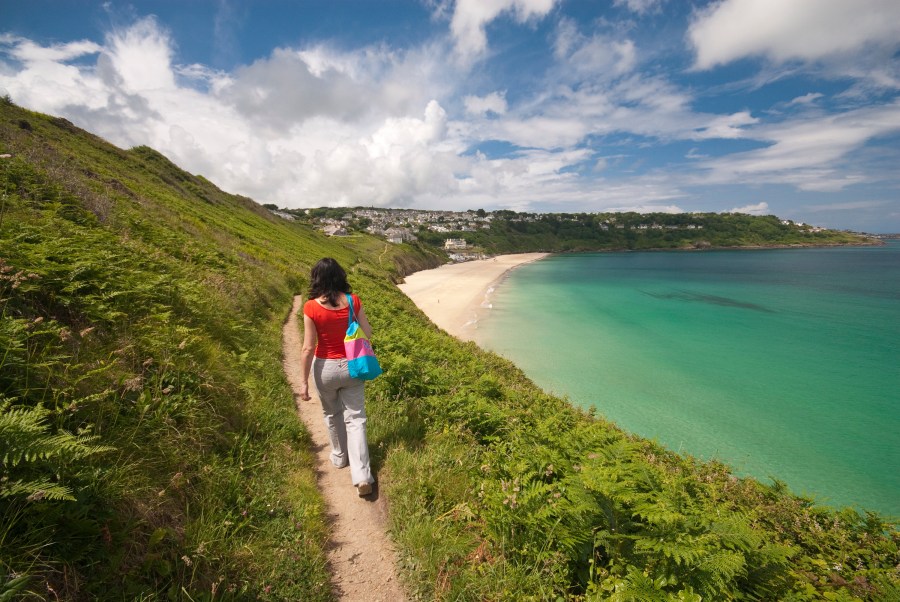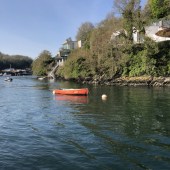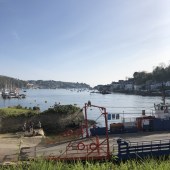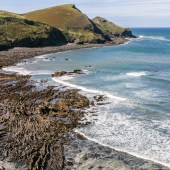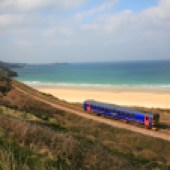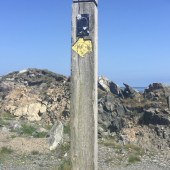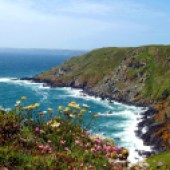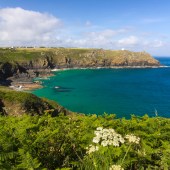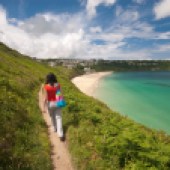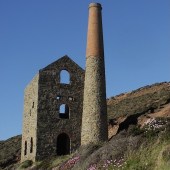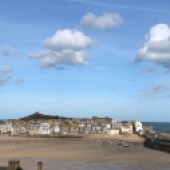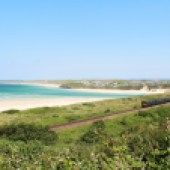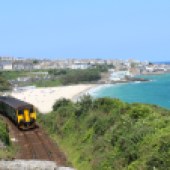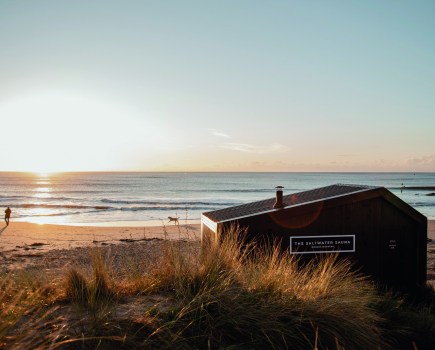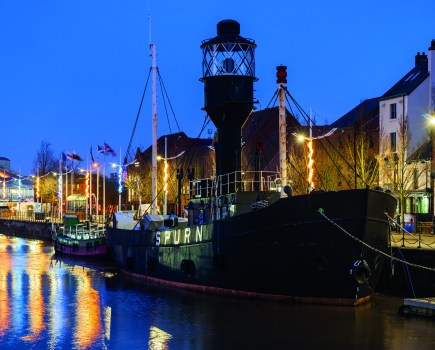Step out into the warm weather this Spring and see what Cornwall’s coast has to offer, as Alex Green shares her favourite walks along the Cornish coastline. Cornwall’s coastline has it all – dramatic cliffs, sheltered coves, and awe-inspiring seascapes.
One of the joys of the Cornwall coastline is the sheer diversity of it. As the rugged north coast gives way to the softer south, there’s a wealth of beautiful sandy bays and secret coves along the way, some of which can only be reached on foot.
And as the weather warms up, there are few greater pleasures than striding out along the coast with the wind behind you and the warmth of the sunshine on your face.
It’s quite possible to come across a secluded beach on a remote stretch of coast and discover that you’ve got it all to yourself. When the time and tide’s right, if you’re brave enough, you could take a bracing dip. Afterwards, you’ll feel full of the joys of spring as your body tingles with the thrill of a cold-water blast.
Here’s five of the best spring walks along the coast in Cornwall:
BEST FOR HIDDEN BEACHES
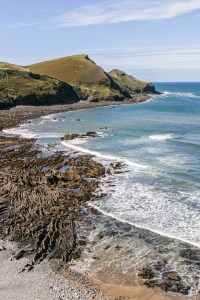
The walk near Crackington Haven combines the coast with the countryside. Credit: Chris Warham/Dreamstime.com
Crackington Haven is a remote village on the north Cornwall coast with a small yet perfectly formed circular walk that combines the coast with the countryside. Start from the car park and stride out along the coast path to the magnificent viewpoint of Cambeak, spotting seals on the rocks below, while looking out for dolphins offshore.
The high cliffs are punctuated by hanging valleys, where streams trickle to the beach in small waterfalls. The undulating path levels off via the inland route as it drops down through the beautiful Ludon valley, where the air fills with birdsong and the woodland is carpeted with bluebells in spring.
Along the way, you’ll encounter the hidden beaches at Little Strand and Strangles, with a rock arch at one end carved out by the sea (approx. 3.5 miles/5.7km).
BEST FOR WALKS FROM THE DOOR
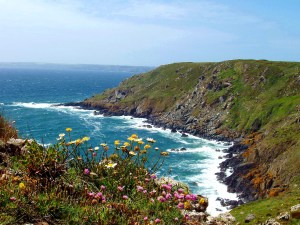
The remote nature of The Lizard peninsula makes for a great escape from the everyday. Credit: Fisfra/Dreamstime.com
A wild and windswept walk around the rugged tip of The Lizard will be sure to blow away the cobwebs as we emerge from winter. The remote nature of this peninsula makes for a great escape from the everyday, where clifftop hotels and cosy fisherman’s cottages provide a walk from the door wherever you happen to stay.
The traditional fishing port at Cadgwith is a must-see location, which is best visited outside of the summer months. Lesser-known coves lie in wait for the intrepid traveller on foot. From Poltesco, the coast path wends its way to Carleon Cove. Here you can visit the remains of a Victorian factory that once produced stoneware using serpentine rock, a stone that’s unique to the Lizard coast.
The highlight for many will be a glimpse of a chough, Cornwall’s national bird. The first breeding pair in England of this acrobatic red-legged crow began nesting at Lizard Point in 2002 after a 20-year hiatus. Dog lovers will be delighted too – the wide stretch of sandy beach at Housel Bay is dog friendly all year round (approx. 10.4 miles/16.7km).
BEST FOR TRAILS FROM THE TRACKS
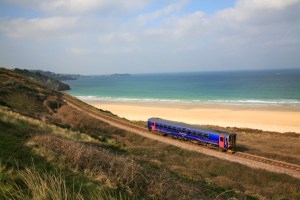
The Lelant to St Ives branch line makes getting to this popular seaside town a breeze. Credit: Imagerail.co.uk
From the mainline train station at Penzance via St Erth, the Lelant to St Ives branch line makes getting to this popular seaside town a breeze. Forget jostling for a parking space in St Ives and take time to appreciate the landscape that’s inspired artists and writers for generations. It’s even better if you arrive on foot.
In spring, the Hayle estuary is alive with the comings and goings of migrant birds including oystercatchers, plovers, and godwits. Feel the sand between your toes as you cross the dunes at Porth Kidney, then follow the waymarked route that runs parallel to the tracks and skirts the coastline of Carbis Bay (approx. 4.5 miles/7.2km).
BEST FOR WILD SWIMMING
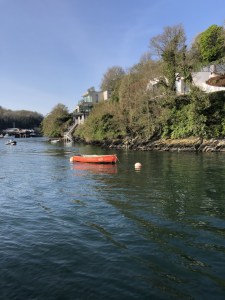
The circular walk on both sides of the River Fowey near Bodinnick is a delight. Credit: Alex Green
If you like messing about in boats, the circular walk on both sides of the River Fowey, taking in two ferry trips from Bodinnick and Polruan, is a rewarding walk. Author Kenneth Grahame was inspired to create the characters of Ratty and Toad in The Wind in the Willows after visiting his friend and fellow writer, Arthur Quiller Couch, who once lived in Fowey. As did Daphne du Maurier, who wrote the classics Rebecca, Frenchman’s Creek and Jamaica Inn while living at Ferryside beside the slipway at Bodinnick.
Stepping off the ferry, walk through ancient woodland where the smell of wild garlic peppers the air in springtime and bluebells line the forest floor. When you reach Lantic Bay – a beautiful horseshoe beach, take the opportunity for a quick dip in the sea. The sheltered cove has a white sandy beach and crystal blue, refreshing waters, which is perfect for bathing. To add to its appeal, it’s south-facing so enjoys much of the day’s sun. The beach can be difficult to find, with a challenging but worthwhile climb back up to the coast path.
As you make your way back to Bodinnick via the Polruan to Fowey ferry, you’ll pass The Haven at Whitehouse Point where wrier Sir Arthur Quiller Couch lived until his death in 1944 (approx. 5.8 miles/9.3km).
BEST FOR PACKING A PICNIC
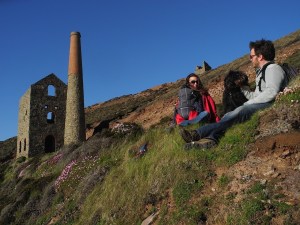
The old engine house at Wheal Coates perches dramatically on the clifftops. Credit: Alex Green
The cliffs above Chapel Porth beach are stained red as a result of the mineralisation of the rocks almost 300 million years ago. Above them, the old engine house at Wheal Coates perches dramatically on the clifftops, while the multi-coloured caves and the natural arch at Chapel Porth beach make it an excellent place to pause.
Catch low tide at Chapel Porth to see the beach at its best and pack a picnic to enjoy as you watch the sun go down. Afterwards, explore the mining and wartime remains in Chapel Combe on your way back to the popular surfers’ beach at Porthtowan (approx. 3.4 miles/5.5km).
DID YOU KNOW?
- There are over 300 beaches in Cornwall and 422 miles of coastline.
- Cornwall boasts the southernmost point of England at Lizard Point and the westernmost point at Land’s End.
- The Cornwall Area of Outstanding Natural Beauty and the UNESCO. designated Cornish Mining World Heritage site is almost entirely located on the coast.
Find out more…
greatscenicrailways.co.uk/great-days-out/walks-and-trails
For more Cornish activities to fill your staycation days, check out these 10 best days out in Cornwall.

